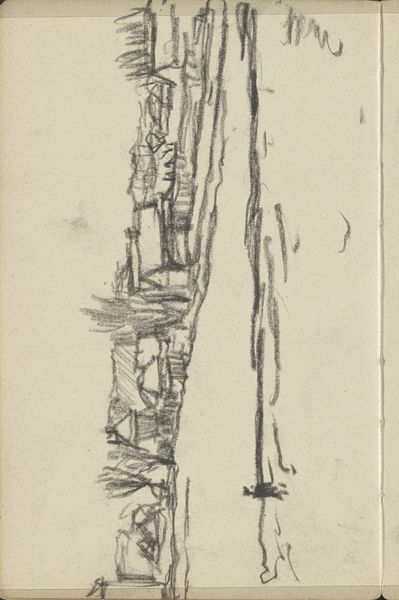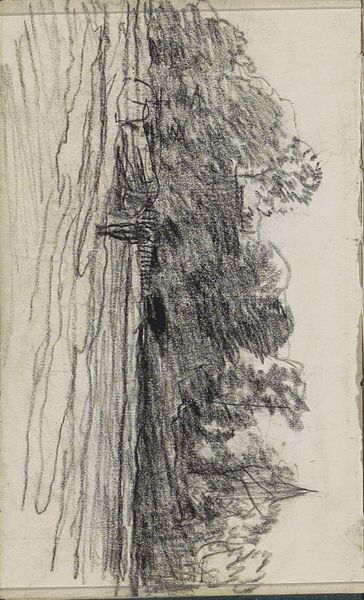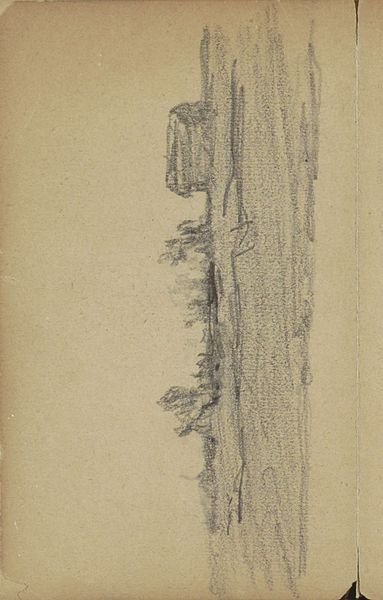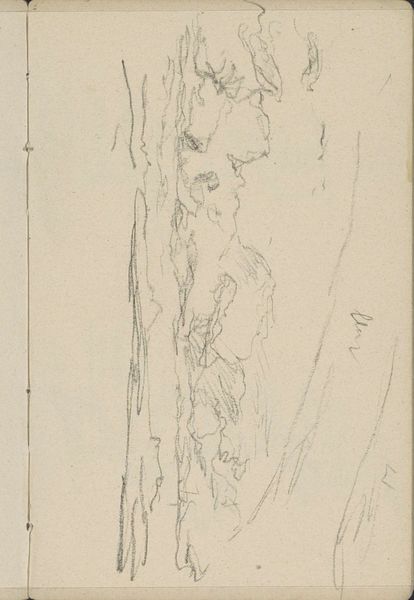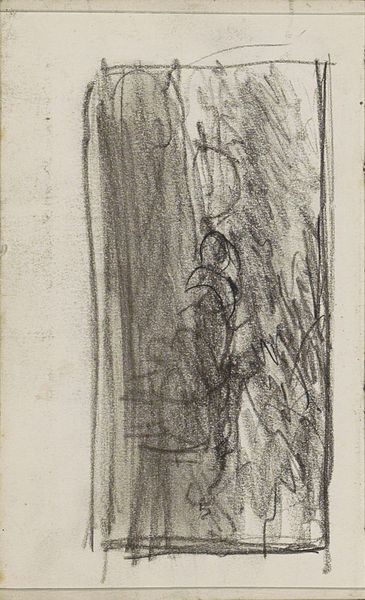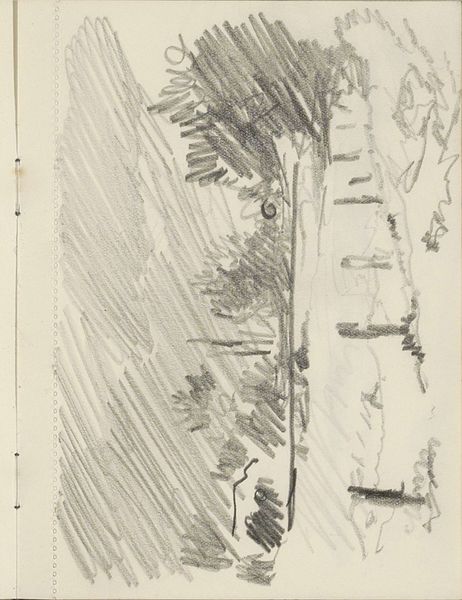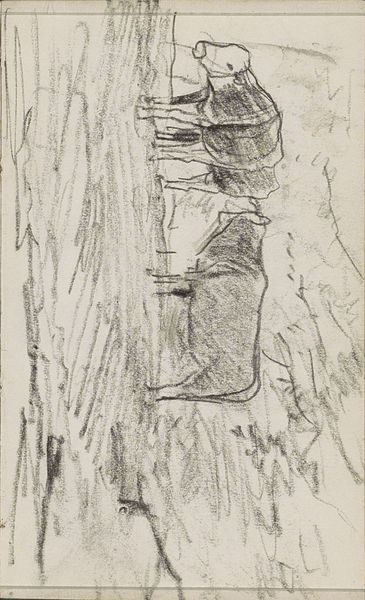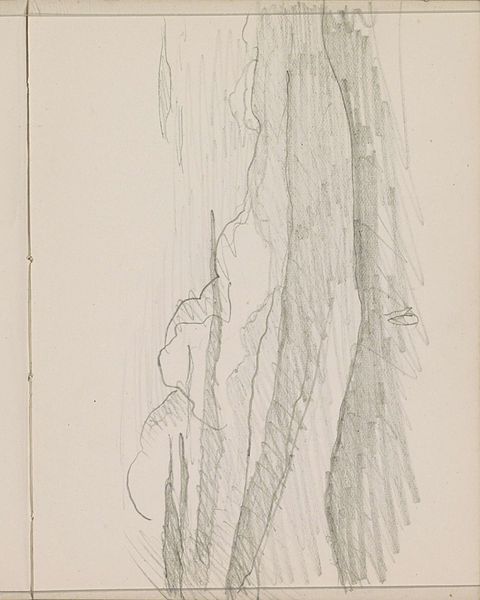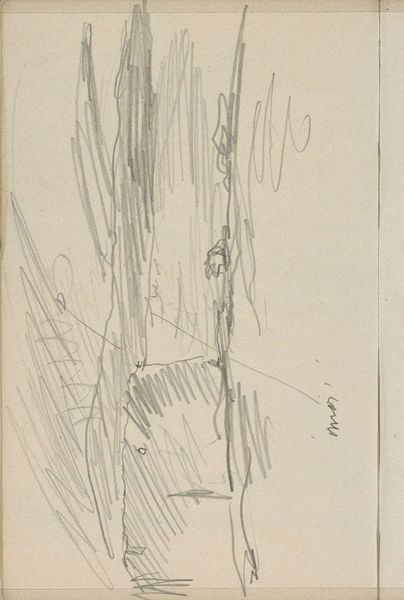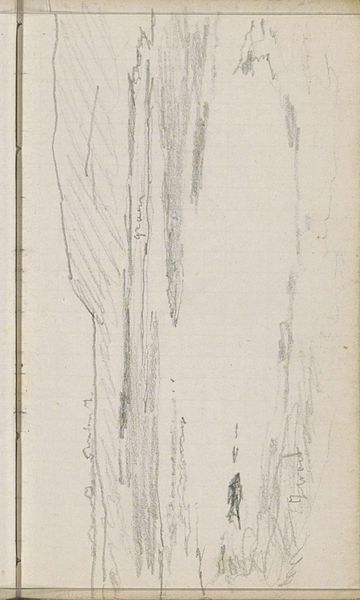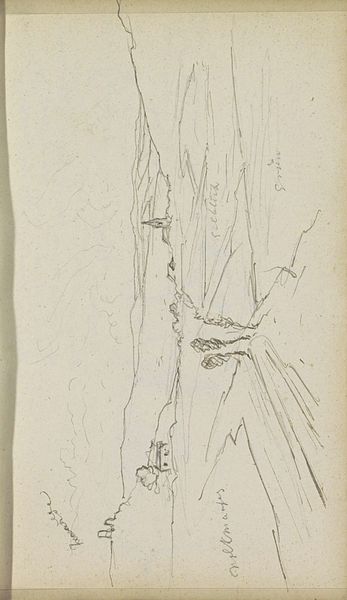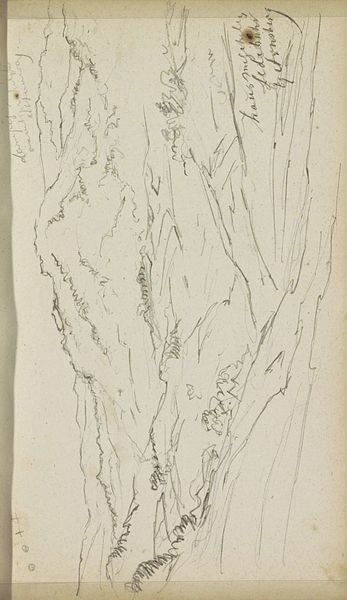
drawing, pencil
#
drawing
#
amateur sketch
#
toned paper
#
impressionism
#
pencil sketch
#
incomplete sketchy
#
landscape
#
personal sketchbook
#
ink drawing experimentation
#
pen-ink sketch
#
pencil
#
sketchbook drawing
#
sketchbook art
#
realism
#
initial sketch
Copyright: Rijks Museum: Open Domain
Editor: Here we have "Landschap met grazend vee," or "Landscape with grazing cattle," a pencil drawing by Anton Mauve, dating somewhere between 1848 and 1888. It's a fairly simple sketch, giving the impression of transience. What social context can we read into a quick landscape drawing like this? Curator: It’s tempting to dismiss this as simply a pastoral scene, but it's essential to contextualize it. Mauve was working in a period where rapid industrialization was drastically changing the Dutch landscape and the lives of rural communities. So, is this sketch then just a peaceful depiction, or a subtle commentary on the vanishing rural life due to the growing social inequality and wealth disparity of that time? How might the lives of the laborers caring for that "grazend vee" intersect with Mauve's more privileged existence as an artist? Editor: That makes me think about the role of art in documenting social change, particularly for marginalized groups. Did Mauve have any interest in social reform? Curator: That’s an important question. Mauve, though not overtly political, was connected to the Hague School, artists who often depicted the lives of ordinary people. His connection through marriage to Van Gogh might lead us to draw comparison with some of Van Gogh’s earlier depictions of peasant life. How does this sketch potentially speak to a growing awareness – even within the art world – of these social tensions and the realities of those whose lives were directly affected by them? Editor: So it's not just about the landscape, but about the people who shaped and were shaped by it? Curator: Exactly! Think about Land Art, the role of the rural landscape as an activist arena that speaks back to the exploitation of labor and environment! What starts as a quick sketch opens to much broader themes, connecting the lives of those obscured workers to an ongoing dialogue about labor, land, and visibility. Editor: I’ll definitely see landscapes differently from now on! Thanks for sharing this perspective. Curator: Likewise! Considering the social and historical context truly deepens our understanding and enriches our engagement with art.
Comments
No comments
Be the first to comment and join the conversation on the ultimate creative platform.
